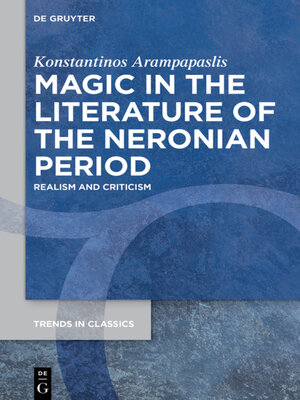Magic in the Literature of the Neronian Period
ebook ∣ Realism and Criticism · Trends in Classics--Supplementary Volumes
By Konstantinos Arampapaslis

Sign up to save your library
With an OverDrive account, you can save your favorite libraries for at-a-glance information about availability. Find out more about OverDrive accounts.
Find this title in Libby, the library reading app by OverDrive.



Search for a digital library with this title
Title found at these libraries:
| Loading... |
Neronian representations of magic, a practice prevalent in the everyday life of the period and a central topic in its literary production, are characterized by unprecedented accuracy and detail. The similarities of witchcraft depictions in Seneca's Medea, Lucan's book 6, and Petronius' Satyrica with spells of the PGM, the defixiones, as well as with Pliny's quasi-magical recipes underscore realism as the distinctive trait of Neronian magic scenes which has often been considered the authors' means to differentiate themselves from their Augustan predecessors. However, such high-degree realism is not merely an ornamental feature but transforms into a tool that influences the reader's response toward magic, according to each author's worldview and aims. The cross-generic examination of the motif of magic in the major Neronian authors shows how realism forms a link between reader, contemporary experience, and text that encourages more active participation on the part of the reader. At the same time, images of destruction, the horrific, and the ridiculous further enhance the negative view of magic as an ineffective (Lucan-Petronius) or destructive force (Seneca), simultaneously eliciting the reader's critical response.






